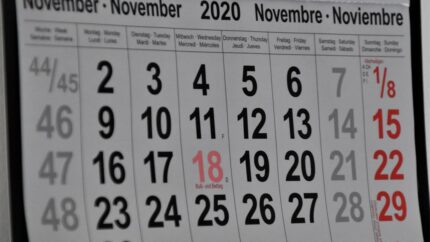Mayan Calendar Predictions: Did They Really Foretell Doomsday?

The Mayan civilization, which thrived in Mesoamerica from 2000 BCE to 1500 CE, is known for its advanced knowledge in various fields such as astronomy, mathematics, and agriculture. One of their most notable achievements is their calendar system, which is still studied and admired today. The Mayan calendar is a complex system that consists of several interlocking calendars, each with its own purpose and significance.
Studying ancient civilizations like the Mayans allows us to gain insight into the knowledge and wisdom of our ancestors. It helps us understand how they perceived the world around them and how they made sense of their existence. By delving into their calendar system, we can uncover the intricate ways in which they measured time and organized their lives. This knowledge not only enriches our understanding of history but also provides us with valuable lessons that we can apply to our own lives.
The Ancient Mystery of the Mayan Civilization
The Mayan civilization was one of the most advanced civilizations of its time. They built impressive cities with intricate architecture, developed a sophisticated writing system, and made significant advancements in fields such as astronomy and mathematics. However, despite their achievements, the Mayan civilization mysteriously declined around the 9th century CE.
The exact reasons for the decline of the Mayan civilization are still debated among scholars. Some theories suggest that environmental factors such as droughts and deforestation played a role in their downfall. Others propose that political instability and warfare led to the collapse of their society. Whatever the cause may be, the sudden decline of such an advanced civilization remains a fascinating mystery that continues to captivate researchers and historians.
The Mayan Calendar System: How It Works
The Mayans had several calendars that served different purposes. The most well-known calendar is the Long Count calendar, which measures time in cycles known as baktuns. Each baktun is equivalent to 144,000 days or approximately 394 years. The Long Count calendar starts from a mythical creation date and counts the number of baktuns that have passed since then.
In addition to the Long Count calendar, the Mayans also had a Haab calendar, which was a solar calendar consisting of 18 months of 20 days each, with an additional five-day period known as the Wayeb. This calendar was used for agricultural and seasonal purposes. Another important calendar was the Tzolk’in, which was a sacred calendar consisting of 260 days. It was used for religious and divinatory purposes.
The Long Count calendar holds particular significance because it marks the passage of time in large cycles. The end date of the Long Count calendar, which corresponds to December 21, 2012, has garnered much attention and speculation in recent years.
The 2012 Phenomenon: What It Was All About
The year 2012 gained widespread attention due to various theories and predictions surrounding the end of the Mayan Long Count calendar. Some believed that this date marked the end of the world or a major cataclysmic event. This idea gained traction in popular culture, leading to numerous books, movies, and documentaries that explored the supposed doomsday prophecy.
However, it is important to note that these predictions were largely based on misinterpretations of the Mayan calendar. The Mayans themselves did not believe that the end of the Long Count calendar signaled an apocalypse. Instead, they viewed it as a time of renewal and rebirth.
The Doomsday Prophecy: Separating Fact from Fiction
The idea of a doomsday prophecy associated with the end of the Mayan Long Count calendar is largely a product of Western misinterpretation. The Mayans did not predict an apocalyptic event; rather, they saw the end of the calendar as a time of transition and renewal.
The misinterpretation of the Mayan calendar can be attributed to a lack of understanding of Mayan culture and their concept of time. Western culture tends to view time as linear, with a clear beginning and end. In contrast, the Mayans believed in cyclical time, where events repeat in cycles. The end of the Long Count calendar simply marked the completion of one cycle and the beginning of another.
The Role of Western Misinterpretation in the Mayan Calendar Predictions
The misinterpretation of the Mayan calendar by Western culture played a significant role in fueling the 2012 phenomenon. The idea of an impending doomsday scenario captured the imagination of many, leading to widespread fear and speculation.
This misinterpretation can be attributed to a combination of factors, including cultural differences, linguistic challenges, and a lack of understanding of Mayan cosmology. The Mayan calendar was not meant to predict specific events or dates; rather, it was a tool for measuring time and organizing their lives.
The Significance of the Long Count Calendar and Its End Date
While the end date of the Mayan Long Count calendar does not signify an apocalyptic event, it still holds significance in Mayan cosmology. The completion of one cycle and the beginning of another represents a time of transition and renewal.
The end date of the Long Count calendar also aligns with astronomical events such as the winter solstice, which has been celebrated by various cultures throughout history. This alignment may have held symbolic meaning for the Mayans, representing a time of rebirth and regeneration.
Mayan Calendar Predictions: What They Actually Foretold
Contrary to popular belief, the Mayans did not make specific predictions about events that would occur at the end of their Long Count calendar. Their calendar system was primarily used for measuring time and organizing their lives, rather than predicting the future.
The Mayans had a deep understanding of celestial cycles and used their knowledge of astronomy to create accurate calendars. However, their calendars were not intended to predict specific events or dates. Instead, they provided a framework for understanding the cyclical nature of time and the interconnectedness of all things.
The Legacy of the Mayan Civilization and Its Contributions to Humanity
The Mayan civilization has left a lasting impact on modern society. Their advancements in fields such as astronomy, mathematics, and agriculture have greatly influenced our understanding of the world.
In astronomy, the Mayans developed a highly accurate calendar system that tracked celestial events with precision. They were able to predict eclipses and other astronomical phenomena with remarkable accuracy. Their mathematical achievements include the concept of zero and a sophisticated numerical system that allowed for complex calculations.
In agriculture, the Mayans developed innovative farming techniques such as terracing and irrigation systems. They cultivated crops such as maize, beans, and squash, which formed the basis of their diet.
Learning from the Past and Moving Forward
Studying ancient civilizations like the Mayans allows us to gain a deeper understanding of our shared human history. The knowledge and wisdom of these ancient cultures can provide valuable insights into our own lives and help us navigate the challenges of the present.
The Mayan calendar system is a testament to the ingenuity and sophistication of this ancient civilization. By studying their calendar system, we can learn about their perception of time, their connection to the natural world, and their belief in cyclical time.
Ultimately, the Mayan civilization reminds us of the importance of preserving and learning from our collective human heritage. By studying ancient civilizations like the Mayans, we can gain a greater appreciation for the wisdom and knowledge that they have passed down to us.
FAQs
What is the Mayan calendar?
The Mayan calendar is a system of calendars used by the ancient Mayan civilization in pre-Columbian Mesoamerica.
What is the significance of the Mayan calendar?
The Mayan calendar is significant because it is one of the most complex and accurate calendars ever created. It was used to track time, predict astronomical events, and plan religious ceremonies.
Did the Mayan calendar predict the end of the world?
No, the Mayan calendar did not predict the end of the world. The idea that the Mayan calendar predicted doomsday was a misinterpretation of the calendar by some people.
What was the Mayan calendar’s prediction for December 21, 2012?
The Mayan calendar did not predict anything specific for December 21, 2012. This date was the end of a cycle in the calendar, but it was not seen as a doomsday prediction by the Mayans.
Why did some people believe that the Mayan calendar predicted doomsday?
Some people believed that the Mayan calendar predicted doomsday because they misinterpreted the end of a cycle in the calendar as the end of the world. This idea was popularized in the media and in popular culture.
What happened on December 21, 2012?
Nothing significant happened on December 21, 2012. It was a normal day, and there were no major disasters or events that occurred.
Is the Mayan calendar still used today?
Yes, the Mayan calendar is still used today by some indigenous communities in Mesoamerica. It is also studied by scholars and researchers who are interested in the history and culture of the Mayan civilization.
Leave A Reply
You must be logged in to post a comment.










 Paranormal
Paranormal

